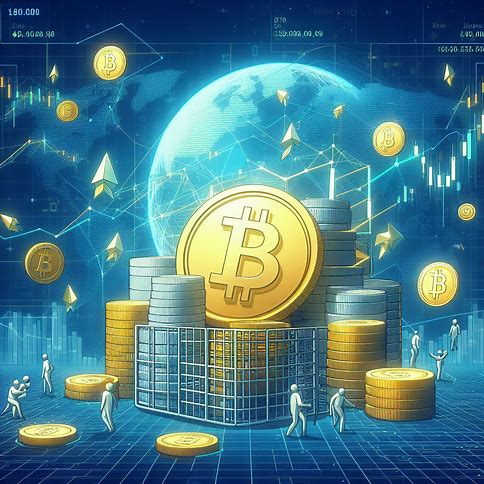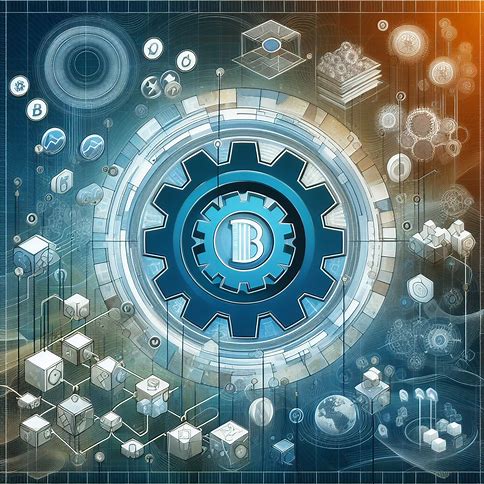What is a Decentralized Application (DApp)? A DApp is an application that runs on a decentralized network, such as a blockchain. Unlike traditional apps, which rely on centralized servers and databases, DApps operate on a peer-to-peer network of computers. This means that instead of a single entity controlling the app and its data, the network is maintained by a distributed network of users.
In this post, we will look at what DApps are and look at how they are changing cryptocurrency and blockchain.
Jump To
ToggleCharacteristics of DApps
1. Open-source
The code for a DApp is typically open-source, meaning anyone can view and verify it. This promotes transparency and trust within the network.
2. Decentralized
DApps operate on a decentralized network, which means there is no central point of control or failure. This makes DApps more resilient and resistant to censorship.
3. Incentivized
Many DApps use cryptocurrencies or tokens to incentivize users to participate in the network. For example, users might be rewarded with tokens for contributing computing power or storage to the network.
How do DApps work?
When you use a DApp, you interact with a smart contract – a self-executing contract with the terms of the agreement directly written into code.
Here is a step-by-step breakdown of how a typical DApp transaction works:
- You initiate a transaction through the DApp’s user interface, such as sending cryptocurrency to another user.
- The transaction is broadcast to the decentralized network, where it’s picked up by nodes (computers running the blockchain software).
- The nodes validate the transaction based on the rules outlined in the smart contract. If the transaction is valid, it’s added to a block on the blockchain.
- Once the block is added to the blockchain, the transaction is considered complete and irreversible.
Because DApps operate on a decentralized network, there is no need for intermediaries like banks or payment processors. This can lead to faster, cheaper, and more secure transactions compared to traditional apps.

Examples of DApps
DApps are being developed for a wide range of industries and use cases, from finance and gaming to social media and supply chain management. A few notable examples include:
1. Uniswap
A decentralized exchange (DEX) that allows users to trade cryptocurrencies directly from their wallets, without the need for a centralized exchange.
2. CryptoKitties
It is a popular game that allows users to buy, sell, and breed digital cats using cryptocurrency. While it may sound trivial, CryptoKitties was one of the first dApps to demonstrate the potential of blockchain technology for gaming and digital collectibles.
3. Steemit
Steemit is a decentralized social media platform that rewards users with cryptocurrency for creating and curating content. Think of it like a cross between Reddit and Medium, but with a focus on user ownership and monetization.
4. Golem
A decentralized marketplace for computing power, allowing users to rent out their idle computer resources to others who need them for tasks like machine learning or 3D rendering.
Advantages of DApps
1. Security
Because DApps operate on a decentralized network, they’re less vulnerable to hacking and other security threats compared to centralized apps.
2. Censorship resistance
With no central authority controlling the network, it is harder for anyone to censor or shut down a dApp.
3. User control
DApps give users more control over their data and assets, as they’re not stored on a centralized server owned by a single company.
4. Lower fees
By eliminating intermediaries, dApps can often offer lower fees compared to traditional apps, especially for transactions involving cryptocurrency.
Challenges and Limitations
1. Scalability
Because DApps operate on a decentralized network, they can be slower and less efficient compared to centralized apps, especially as the number of users grows.
2. User experience
Interacting with a DApp often requires a certain level of technical knowledge, such as setting up a cryptocurrency wallet and navigating a blockchain explorer. This can be a barrier to entry for some users.
3. Regulation
The legal and regulatory landscape around dApps is still evolving, which can create uncertainty for developers and users alike.
4. Adoption
While DApps have gained traction in certain niches like DeFi (decentralized finance), they have not yet achieved mainstream adoption on the same scale as traditional apps.
Key Takeaways
- DApps are decentralized applications that run on a blockchain network, enabling secure, transparent, and user-centric interactions.
- DApps use smart contracts to execute transactions and enforce rules, without the need for intermediaries or central authorities.
- Examples of DApps include decentralized exchanges like Uniswap, gaming platforms like CryptoKitties, and social media networks like Steemit.
- Advantages of DApps include greater security, censorship resistance, user control, and lower fees compared to traditional apps.
- Challenges and limitations of dApps include scalability, user experience, regulation, and adoption.
FAQs
1. Do I need to know how to code to use a DApp?
A: No, you don’t need to know how to code to use a DApp. Most dApps have user-friendly interfaces that allow you to interact with the blockchain network without any coding knowledge.
2. What cryptocurrency do I need to use a dApp?
A: It depends on the specific DApp you are using. Some DApps require you to use a particular cryptocurrency, such as Ethereum or EOS, while others may accept a range of different tokens.
3. Are DApps only used for financial transactions?
A: No, while many DApps are focused on financial applications like trading and lending, there are also dApps for a wide range of other use cases, such as gaming, social media, and supply chain management.
4. Can DApps be hacked?
A: While DApps are generally more secure than traditional apps, they are not completely immune to hacking and other security threats. However, because DApps operate on a decentralized network, it is much harder for hackers to target a single point of failure.
5. How do I find DApps to use?
A: There are many online directories and marketplaces where you can find and use DApps, such as DappRadar, State of the DApps, and OpenSea. You can also find DApps through social media and online communities focused on blockchain and cryptocurrency.










